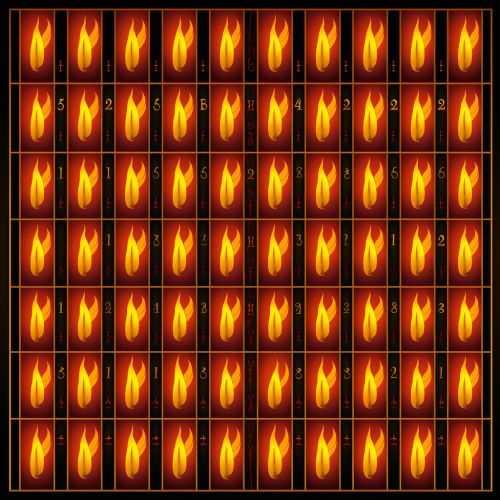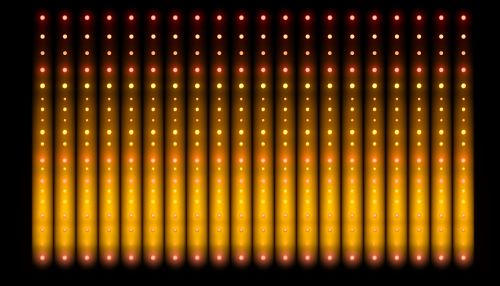Number Nine
Introduction
Number nine is a cardinal number following eight and preceding ten. It is an integer that is significant in many fields, including mathematics, science, culture, and philosophy. The number nine has a unique set of properties and characteristics that set it apart from other numbers, and it is often associated with completion or finality due to its position as the last single-digit number in the decimal system1(https://www.britannica.com/topic/number-symbolism).
Mathematics
In the field of mathematics, the number nine holds a special place due to its unique properties. It is the highest single-digit number in the decimal system, and it has several interesting characteristics that make it stand out among other numbers.
Properties
One of the most notable properties of the number nine is its behavior under multiplication. When a number is multiplied by nine, the digits of the resulting product add up to nine or a multiple of nine. For example, 9 x 5 = 45, and 4 + 5 = 9. This property holds true for all positive integers2(https://www.mathsisfun.com/numbers/nine.html).


Another interesting property of nine is that it is the only number which when added to any other number does not change the digit sum of that number. For example, 7 + 9 = 16, and 1 + 6 = 7, which is the original number.
Nine is also a composite number, its proper divisors being 1 and 3. It is 3 cubed and hence the third square number. Nine is a Motzkin number3(https://oeis.org/A001006). It is the first composite lucky number.
In Number Theory
In number theory, a branch of pure mathematics, nine is often used in proofs and theorems due to its unique properties. For example, the digital root of a number, or the iterative process of repeatedly summing the digits of a number until a single-digit number is reached, will always result in nine if the original number is a multiple of nine4(https://www.mathsisfun.com/numbers/digital-root.html).


Science
The number nine also has significance in various scientific fields, from physics and chemistry to astronomy and biology.
Physics and Chemistry
In physics, the number nine is the atomic number of fluorine, which is a light, extremely reactive, and poisonous univalent halogen element5(https://www.britannica.com/science/fluorine). In chemistry, there are nine fundamental types of chemical reactions, including synthesis, decomposition, single displacement, double displacement, combustion, acid-base, redox, complexation, and precipitation reactions6(https://chem.libretexts.org/@go/page/1825).


Astronomy and Space Science
In astronomy, the number nine has historical significance as there were originally nine planets in our solar system before Pluto was reclassified as a dwarf planet in 20067(https://www.nasa.gov/audience/forstudents/k-4/stories/nasa-knows/what-is-pluto-k4.html). The ninth planet, Neptune, is the farthest planet from the sun in our solar system.


Biology
In biology, there are nine openings in the human body: two eyes, two nostrils, two ears, the mouth, the anus, and the urethra8(https://www.ncbi.nlm.nih.gov/books/NBK279395/). Additionally, pregnancy in humans typically lasts nine months.
Culture and Philosophy
The number nine is also significant in various cultures and philosophical systems around the world.
In Religion
In many religions, the number nine is of great importance. For instance, in Norse mythology, there are nine worlds interconnected by the world tree, Yggdrasil9(https://www.britannica.com/topic/Yggdrasill). In Christianity, there are nine fruits of the Holy Spirit mentioned in the Bible10(https://www.biblegateway.com/passage/?search=Galatians+5%3A22-23&version=NIV).


In Philosophy
In philosophical numerology, the number nine is often associated with completion, fulfillment, and the end of a cycle. This is because it is the last single-digit number, and after nine, the cycle of single digits repeats with ten (1 + 0 = 1)11(https://www.numerology.com/articles/about-numerology/single-digit-number-9/).
See Also
References
1. "Number symbolism." Britannica. https://www.britannica.com/topic/number-symbolism 2. "The Number Nine." Maths Is Fun. https://www.mathsisfun.com/numbers/nine.html 3. "A001006 : Motzkin numbers." OEIS. https://oeis.org/A001006 4. "Digital Root." Maths Is Fun. https://www.mathsisfun.com/numbers/digital-root.html 5. "Fluorine." Britannica. https://www.britannica.com/science/fluorine 6. "9.1: Types of Chemical Reactions." Chemistry LibreTexts. https://chem.libretexts.org/@go/page/1825 7. "What Is Pluto?" NASA. https://www.nasa.gov/audience/forstudents/k-4/stories/nasa-knows/what-is-pluto-k4.html 8. "Body Cavities and Membranes." NCBI. https://www.ncbi.nlm.nih.gov/books/NBK279395/ 9. "Yggdrasill." Britannica. https://www.britannica.com/topic/Yggdrasill 10. "Galatians 5:22-23." Bible Gateway. https://www.biblegateway.com/passage/?search=Galatians+5%3A22-23&version=NIV 11. "The Single Digit Numbers: The Number 9." Numerology. https://www.numerology.com/articles/about-numerology/single-digit-number-9/
